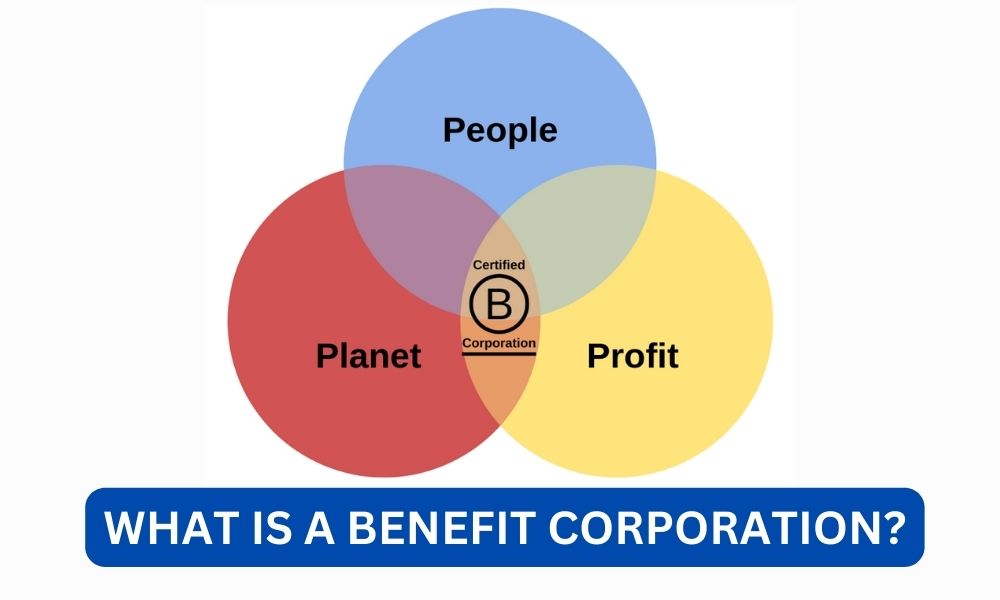In recent years, there has been a growing trend towards socially responsible businesses that prioritize more than just profits. These companies, known as benefit corporations, are redefining the traditional concept of a corporation by incorporating social and environmental impact into their business model. But what exactly is a benefit corporation and how does it differ from a traditional corporation? In this article, we will explore the concept of benefit corporations, their purpose, and their impact on society and the economy.
Contents
Defining Benefit Corporations
A benefit corporation, also known as a B Corp, is a type of for-profit business that is legally required to consider the impact of its decisions on society and the environment. Unlike traditional corporations, which are solely focused on maximizing profits for shareholders, benefit corporations have a dual purpose of creating a positive impact on society and generating profits.
The concept of benefit corporations was first introduced in 2006 by B Lab, a non-profit organization that certifies and supports B Corps. The first state to pass legislation recognizing benefit corporations was Maryland in 2010, and since then, over 35 states in the US have followed suit. In addition, several countries, including Italy, Colombia, and Canada, have also adopted similar legal structures for socially responsible businesses.
Read:A medicare supplement policy must not contain benefits whichHow are Benefit Corporations Different from Traditional Corporations?
One of the main differences between benefit corporations and traditional corporations is their legal structure. While traditional corporations are legally required to prioritize the financial interests of their shareholders, benefit corporations have a legal obligation to consider the impact of their decisions on all stakeholders, including employees, customers, and the community.
Another key difference is the level of transparency and accountability. Benefit corporations are required to undergo a rigorous certification process by B Lab, which assesses their social and environmental performance, accountability, and transparency. This certification is renewed every two years, ensuring that benefit corporations continue to meet the highest standards of social and environmental responsibility.
Moreover, benefit corporations are required to publish an annual benefit report, which details their social and environmental performance and how they have fulfilled their mission. This level of transparency allows consumers and investors to make informed decisions and hold benefit corporations accountable for their actions.
The Purpose of Benefit Corporations
The primary purpose of benefit corporations is to use business as a force for good. These companies are driven by a mission to create a positive impact on society and the environment, rather than solely focusing on profits. This mission is often referred to as the “triple bottom line,” which takes into account not only financial performance but also social and environmental performance.
Read:Is a pension a defined benefit plan?Benefit corporations aim to address some of the most pressing social and environmental issues, such as poverty, inequality, climate change, and access to education and healthcare. By incorporating these issues into their business model, benefit corporations are able to create a more sustainable and equitable world.
Examples of Benefit Corporations
One of the most well-known examples of a benefit corporation is Patagonia, an outdoor clothing and gear company. Patagonia has a strong commitment to environmental sustainability and has taken various initiatives to reduce its environmental impact, such as using recycled materials in its products and donating 1% of its sales to environmental causes.
Another example is Warby Parker, an eyewear company that provides affordable glasses to people in need. For every pair of glasses sold, Warby Parker donates a pair to someone in need, and they also invest in programs that provide training and education to underserved communities.
Other notable benefit corporations include Ben & Jerry’s, TOMS, and Seventh Generation. These companies have all incorporated social and environmental impact into their business models and have become successful while staying true to their mission.
The Impact of Benefit Corporations
Benefit corporations have a significant impact on society and the economy. By prioritizing social and environmental impact, these companies are able to create positive change and address some of the world’s most pressing issues. Here are some of the ways in which benefit corporations are making a difference:
Read:will emergency snap benefits continue in 2024- Creating jobs and economic growth: Benefit corporations often operate in underserved communities and provide employment opportunities, contributing to economic growth and reducing poverty.
- Reducing income inequality: By prioritizing fair wages and employee benefits, benefit corporations help reduce income inequality and promote a more equitable society.
- Addressing environmental issues: Benefit corporations are committed to reducing their environmental impact and promoting sustainable practices, helping to combat climate change and preserve natural resources.
- Supporting social causes: Many benefit corporations have a strong commitment to social causes and donate a portion of their profits to support various initiatives, such as education, healthcare, and poverty alleviation.
Challenges and Criticisms
While benefit corporations have gained popularity and recognition in recent years, they are not without their challenges and criticisms. Some of the common criticisms include:
- Greenwashing: Some companies may claim to be benefit corporations without actually meeting the rigorous standards set by B Lab. This is known as “greenwashing” and can mislead consumers and investors.
- Profit vs. Purpose: Critics argue that benefit corporations may struggle to balance their dual purpose of creating social and environmental impact while also generating profits for shareholders.
- Legal complexities: The legal structure of benefit corporations can be complex and may require additional resources and expertise to navigate.
Conclusion:
In conclusion, benefit corporations are redefining the traditional concept of a corporation by incorporating social and environmental impact into their business model. These companies have a dual purpose of creating a positive impact on society and generating profits, and they are held to a higher standard of transparency and accountability. Benefit corporations have the potential to create significant change and address some of the world’s most pressing issues, but they also face challenges and criticisms. As the demand for socially responsible businesses continues to grow, it is likely that we will see more companies adopting the benefit corporation structure in the future.









